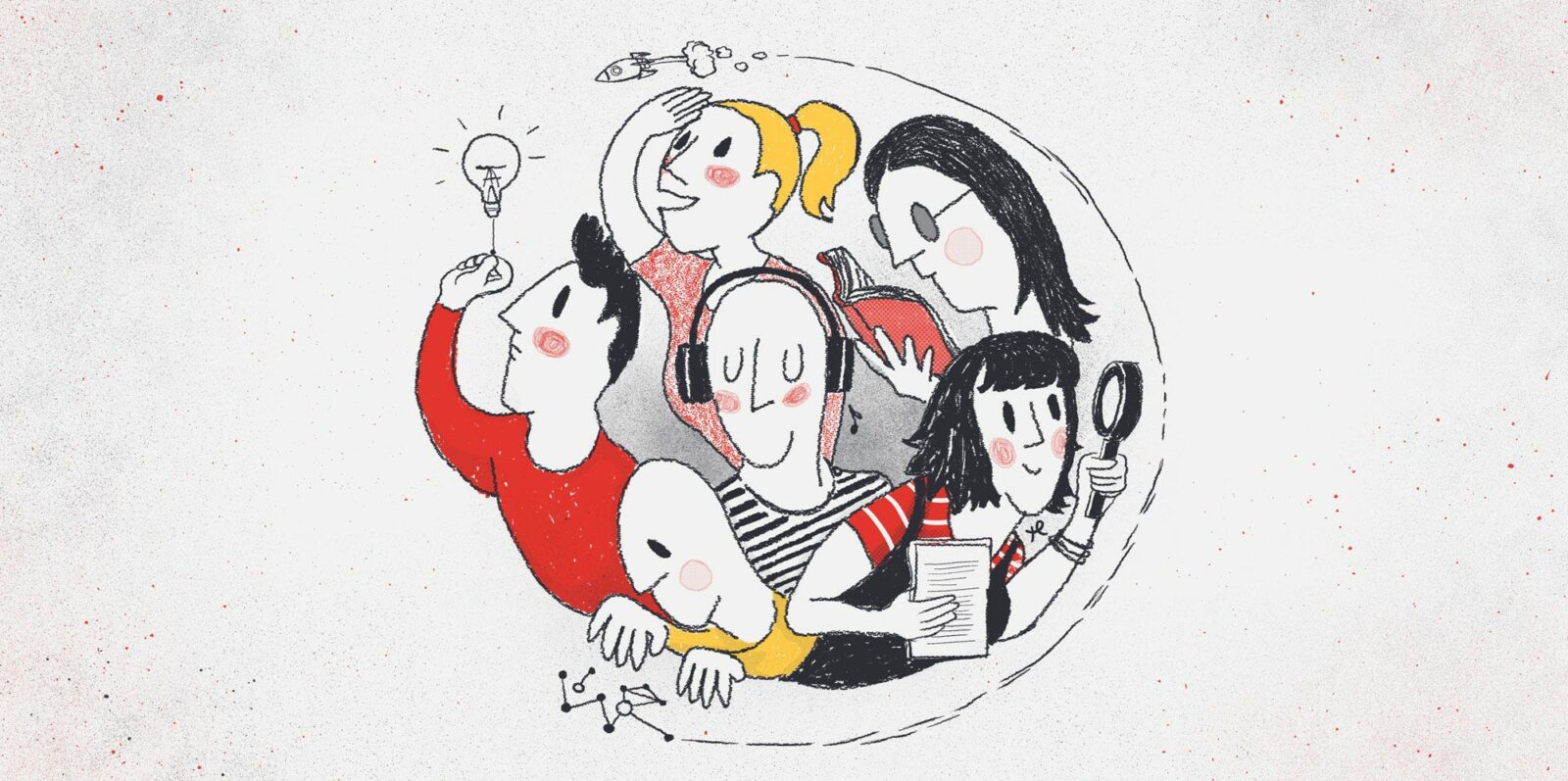Transdisciplinarity as an Intent
Published in ATÖLYE Insights · 7 min read · June 16, 2017
Embracing the integrative model to move beyond traditional disciplinary boundaries
By engin ayaz, Co-founder & Head of Design , Bala Gürcan, Communications Assistant, Editor: Emre Erbirer
The most urgent challenges of the 21st century are increasingly layered and intertwined. Traditional models of work and their respective studies fail to equip individuals with skillsets necessary to survive the modern challenges of professional life. We believe that a transdisciplinarity mindset and approach is essential, informed by the coming together of seemingly disparate disciplines.
Looking Back
History has come to favor alternative approaches to specialized knowledge.
Between the 13th and 17th century, poets, scientists, painters, philosophers and experts from other disciplines flocked to Florence, which at that time was under the reign of the Medici family. Having championed innovation and creative production in the city, the Medici family attracted talented individuals who were able to collaborate and exchange ideas, enabling what was coined by Frans Johansson as "the Medici effect." According to Johansson, through providing the foundation for an interdisciplinary model of production, the Medici family enabled the formation of Renaissance, one of the most innovative periods in human history.
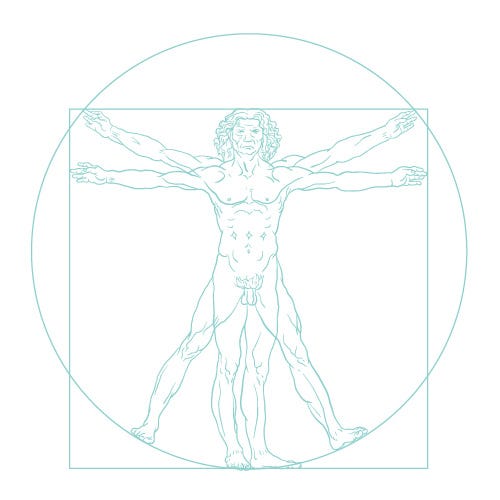
During the Industrial Revolution, the trend of specialization gained prominence, which led to the abandonment of the priorly-idealized "Renaissance man" model (Britannica). The favorability of a newer, specialist model reached its heights during the post-WW2 era, where new professions emerged as a result of the expansion of human knowledge accelerated via the new technologies of the day. However, the tide of history turned once again with the advent of capitalism and consequently of globalization, as period that opened new global "deterritorialized" arenas for disciplines to amalgamate in an unprecedented scale (Trepanier, 2017).
Looking Around
Various trends are currently at play for new generalized ways of seeing.
This recent development brings with it a realization that a single discipline approach does not suffice in solving complex problems of our time. 21st century problems warrant new occupations, and these occupations warrant a new educational paradigm for perceiving the world.
While, the concept of going beyond the limitations of single disciplines has been discussed widely in recent years, there is not necessarily a conclusive outcome.
The suffix of "-disciplinarity" has been used relatively open-endedly both in media and academia.
From our standpoint, the most compelling definition is offered by Paul Stock and Rob J.F. Burton, where they divide heterogenized knowledge transfer into three different levels of integration; basic collaboration (Multidisciplinarity), new knowledge creation (Interdisciplinarity) and fully-integrative synthesis (Transdisciplinary) (Stock and Burton, 2011). Each of these models share a common trait of bringing together individuals from different disciplines in order to propel out-of-the-box thinking and problem-solving. However, a transdisciplinary model inherently requires creating a "unity of intellectual frameworks beyond the disciplinary perspectives," therefore necessitating an effective transfusion of the interdisciplinary input (Jensenius, 2012).
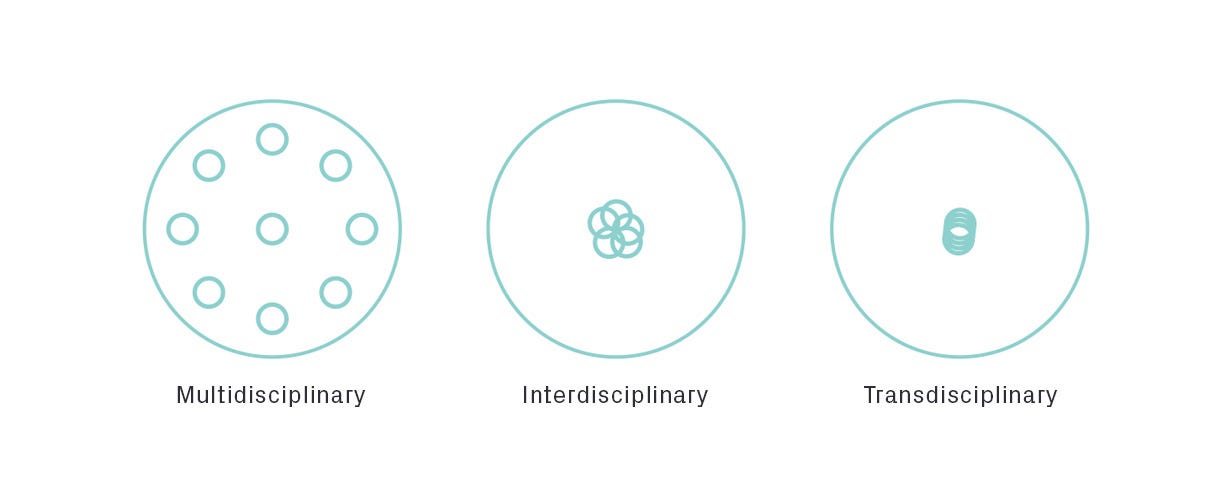
Universities have adopted this integrative approach to formulate new degrees and even departments to capture the new demand for holistic knowledge. An example of such an institution is Minerva, an undergraduate school that provides a core curriculum that feeds of of many different disciplines. By enabling students to live and learn in seven different cultures during their four years of study, Minerva provides a university-level system that stresses the importance of multidimensional information and learning paths.
Other pioneering institutions include MIT Media Lab, described as a "research lab that encourages the unconventional mixing and matching of seemingly disparate research areas", Stanford's d.school, which draws from methods "across the design field to create learning experiences", along with NYU ITP, Parsons Transdisciplinary Design and KAOSPILOT, among others.
Meanwhile, a holistic education is not necessarily the only salvation for 21st century occupations.
A great example of such an individual is Elon Musk, who is trained in basic principles of physics and combines his growth mindset to become an "expert-generalist" (Fortune, 2016). Based on his relentless curiosity, he applies the same questioning attitude for his startups like SpaceX, PayPal, OpenAI, Neurolink and Tesla Motors, creating links and insight loops among all ventures.
Looking In
How we adopt and benefit from a wide-spectrum knowledge base at ATÖLYE.
Informed by these global academic trends, we believe that ATÖLYE can foster a new model of transdisciplinary practice with its unique structure that combines a multidisciplinary network and an interdisciplinary team.
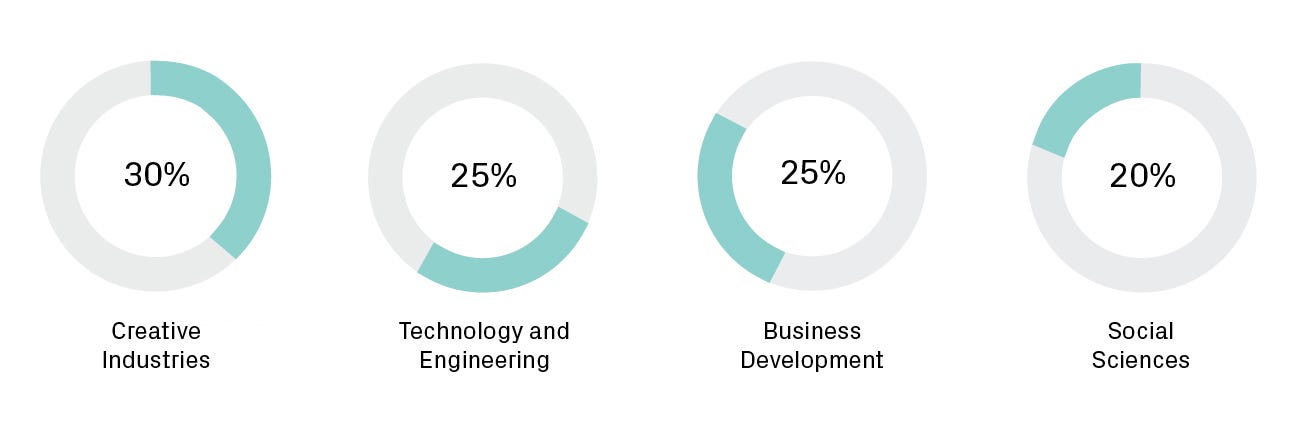
As an intentional and curated network with 150 members, 150 alumni, four sectors and countless disciplines, ATÖLYE houses experts on virtually all applied subjects. ATÖLYE has a sectoral criteria of %30 creative industries, %25 tech & engineering, %25 business development and 20% social sciences. This network is diligently mapped using an interactive interface called Graphcommons, which also happens to be an ATÖLYE alumni venture. Having these experts in proximity fosters learning and collaboration on multiple levels.
This model of interaction enables individuals formulate professional empathy.
Embedded within this network, our interdisciplinary core team is made up of approximately 25 individuals that have a π-shaped competency map, with deep skills in analytical and creative fields.
Their mixed abilities may entail design research, project planning, pricing or statistics on the analytical side, and visual communication, written communication, industrial design, photography or fabrication on the creative side. Combined, each individual can carry two lenses at once, and the small task-based teams are able to tackle diverse challenges as a whole. As a whole team, individuals carry both the hat of helping run the space and the platform, as well as undertake roles in consulting and venture projects, with wide-ranging scopes.
It is in projects where we aspire to enmesh the powers of the multidisciplinary community with our interdisciplinary team.
Specifically, our research phase consists of getting rid of disciplinary boundaries and doing an immersive research. Instead of gathering data from research alone and building on top of existing information, we convey fieldwork in order to formulate our own knowledge base. Based on this research, we formulate a robust, discipline-agnostic brief, which prevents the client from falling into the trap of "a hammer looking for a nail."
In the design phase, we ensure that the appropriate experts are engaged to respond to the brief at hand, either from our team, our community or our wider network. To ensure continuity of knowledge and proper transfer of insights, we also expand the role of the research practitioners into design as feedback providers. To fully engage others with the project, we aim to write briefs with extensive notes, so that they can see the big picture and their position within. Instead of limiting the information exchange to regular meetings, we organize small-scale ideation and testing workshops to capture the best ideas and insights. We aim to leverage the hive mind by organizing brainstorming and feedback sessions with the community.
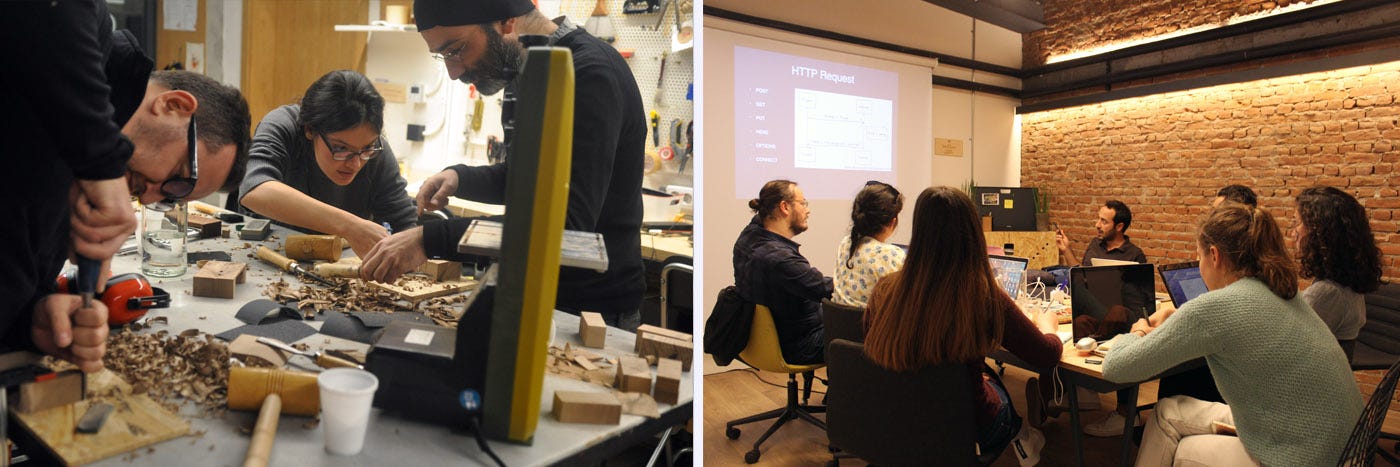
Aside from one-off projects, we also actively do '101 sessions' to increase community's general level of professional empathy, thus underlining our 'intent for transdisciplinarity' in the long term.
Looking Ahead
A move further away from boundaries as dictated by traditional disciplines
As ATÖLYE, we believe that our hybrid model caters not only to the needs of today, but also to the needs of tomorrow.
With the rise of Artificial Intelligence and Machine Learning, all repeatable and well-bounded tasks will be delegated. What remains at hand will be integrative and creative thinking skills as well as intuition-based judgements, as opposed to solely data-driven predictions. This requires a rich, multi-faceted and community-centered practice with a growth mindset.
We believe that ATÖLYE prepares all of its stakeholders for such a future, especially via its intent of transdisciplinarity. Time will show whether we will be able to get closer to it.
Any feedback welcome.
Please sign up below to receive ATÖLYE's weekly e-newsletter: http://eepurl.com/cLJwK5
